This is Paulsfontein just west of Albertinia. A small population in an intensively grazed and weed encroached area. A reminder to keep in mind within and between population variation. This has the Latin epithet ‘fusca’ and I personally fuddle over whether to address it as pygmaea or mirablis. So I suggest H. retusa because these populations simply mirror what I was showing for populations to the west where names like mutica, groenewaldii, badia, joleeniae, bobii, hammeri etc. are collector useful. Conservation is poking me in the ribs but I am not finding the right ambit for that discussion.
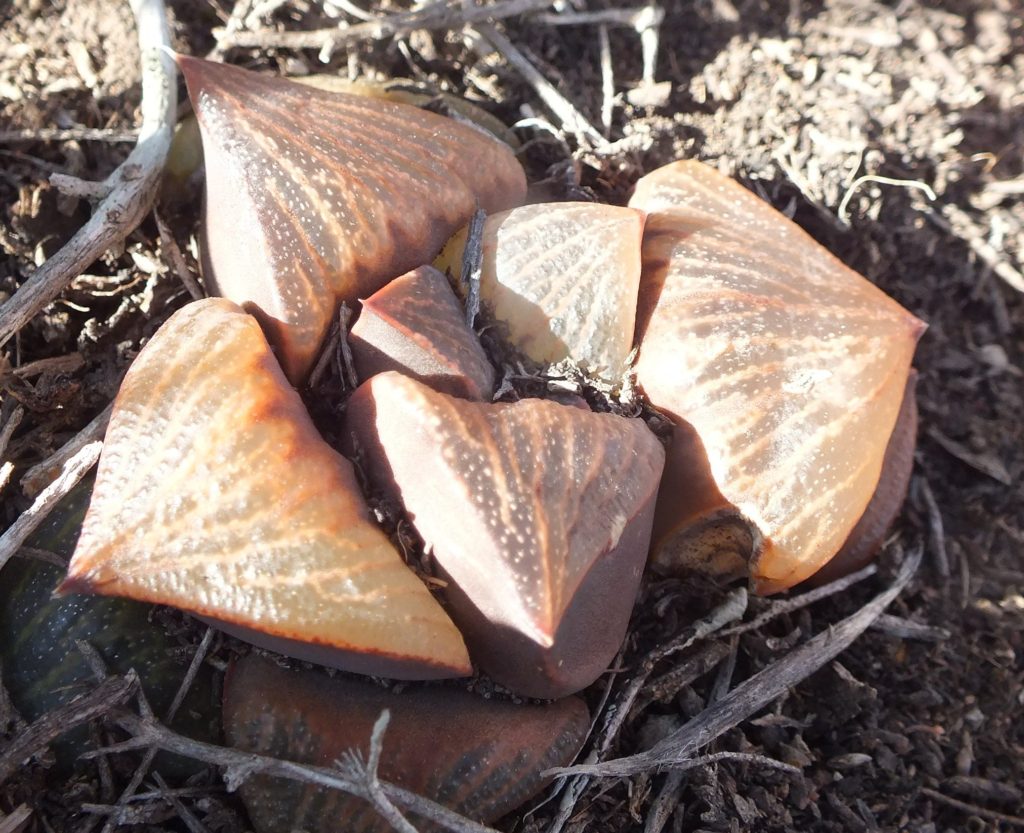
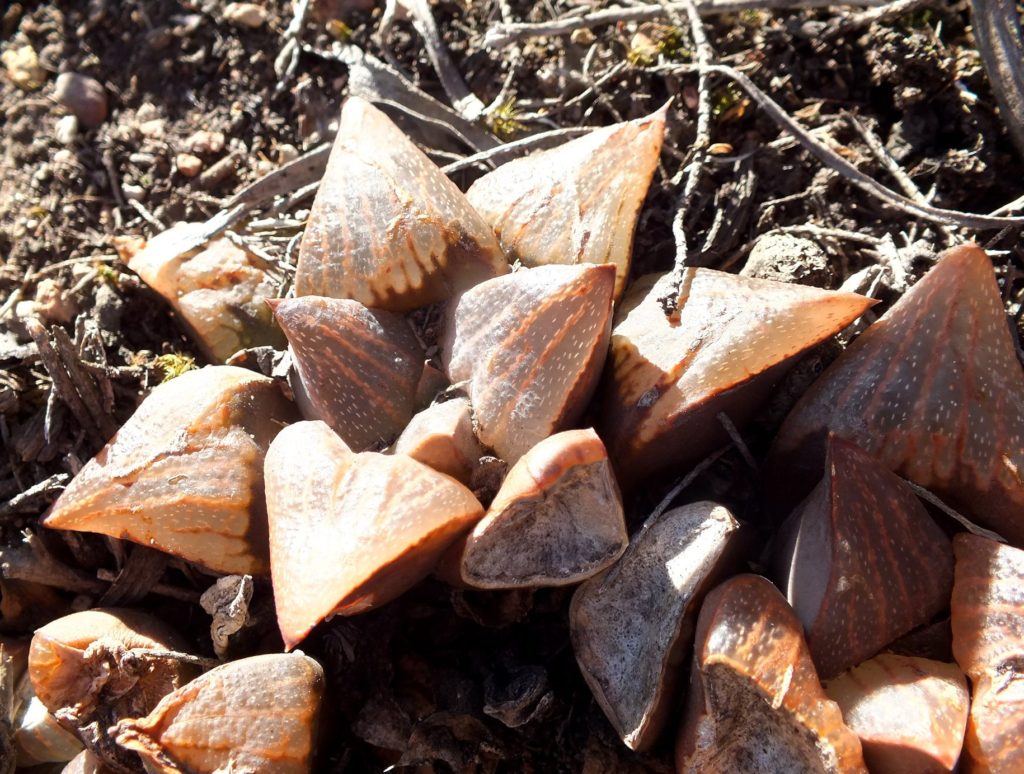
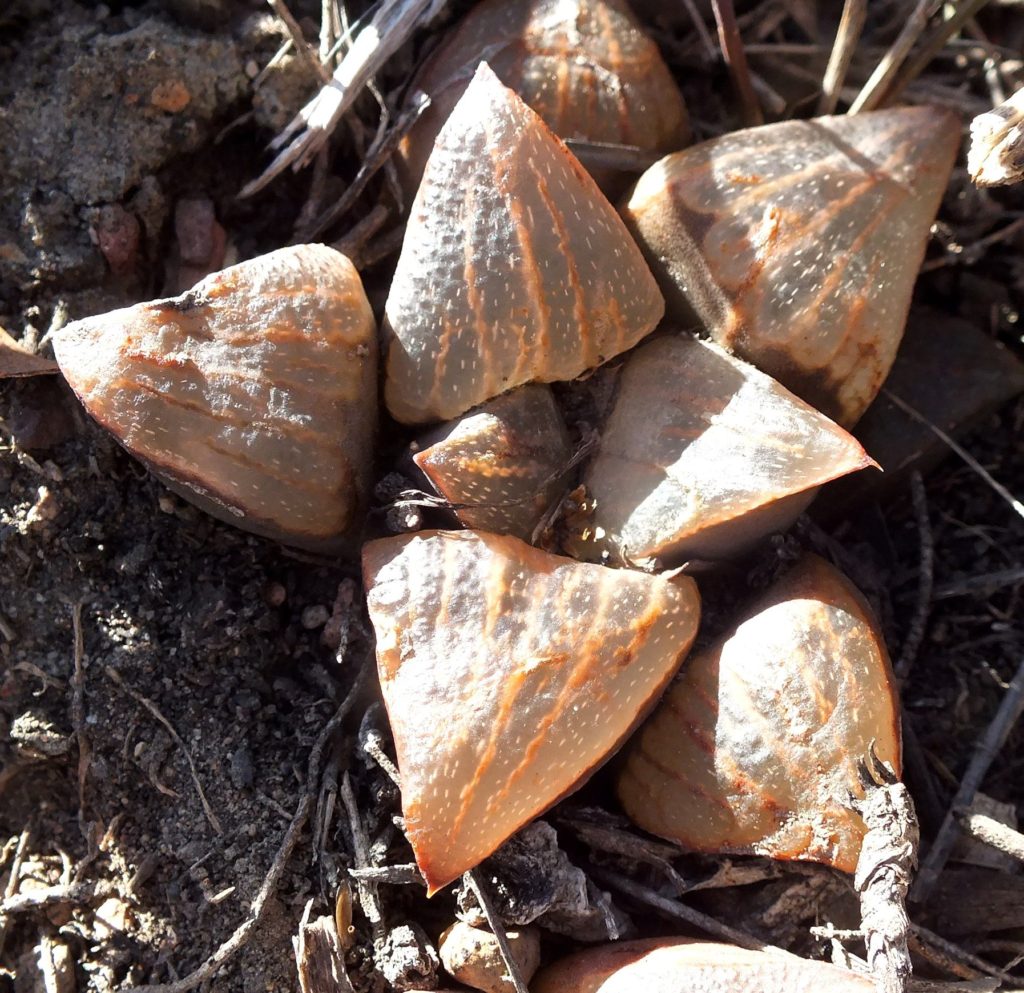
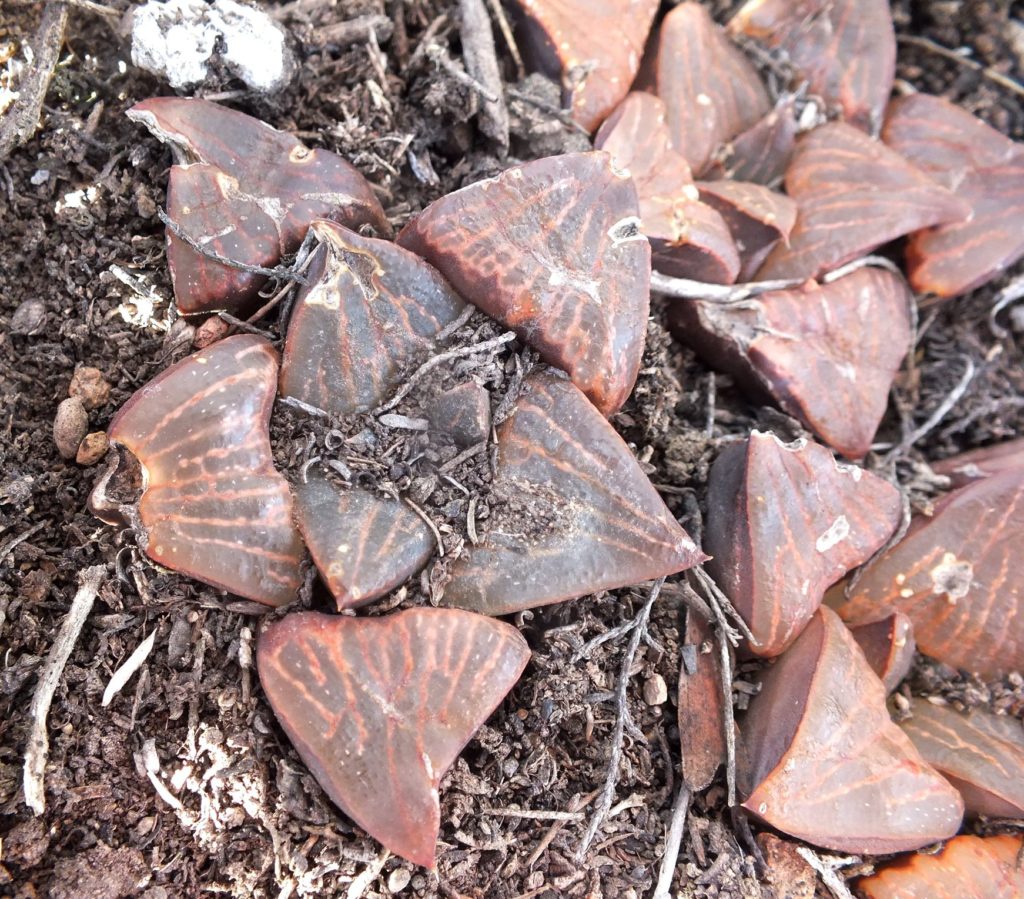
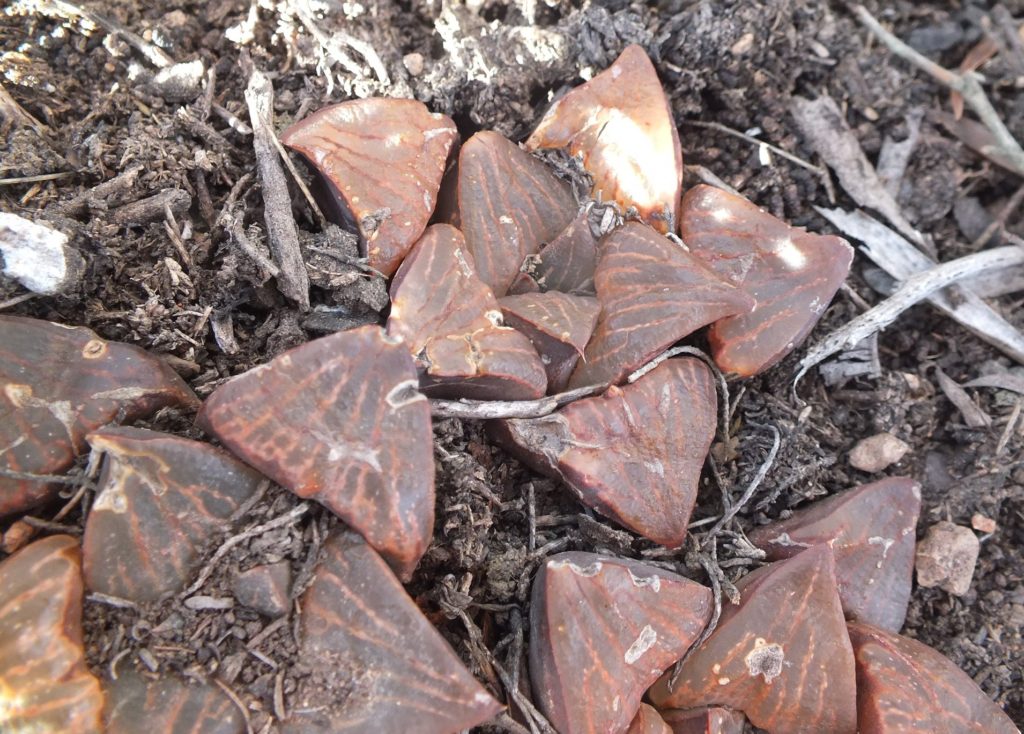
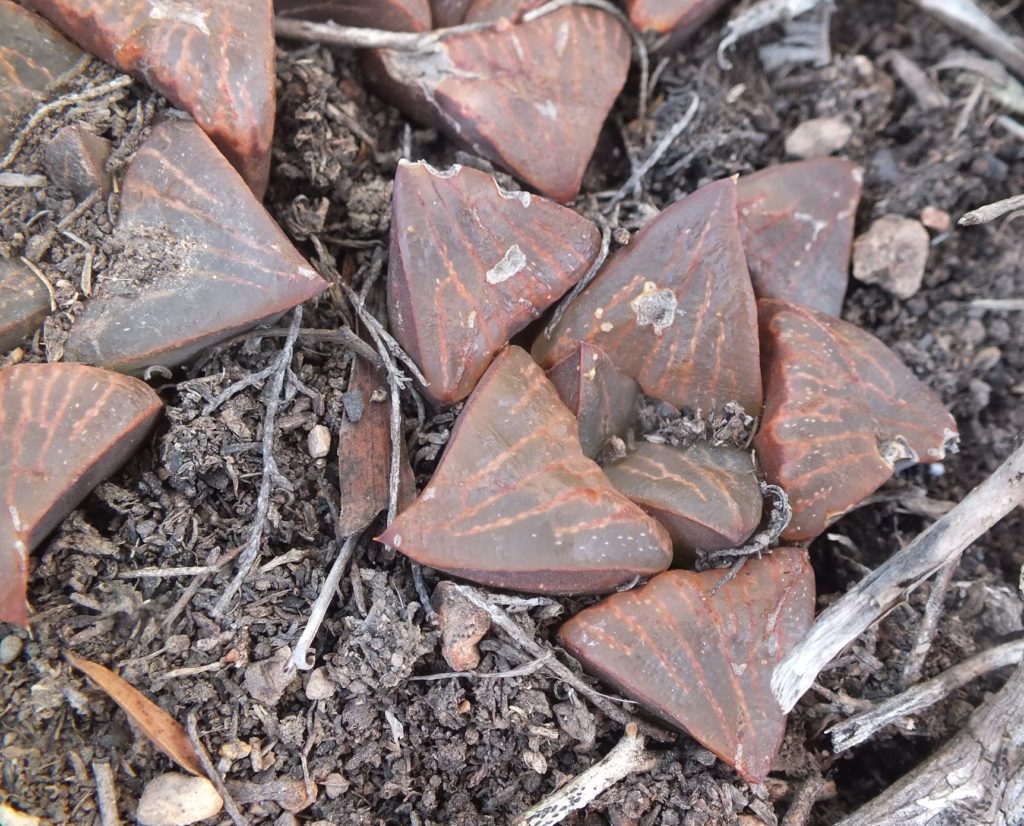
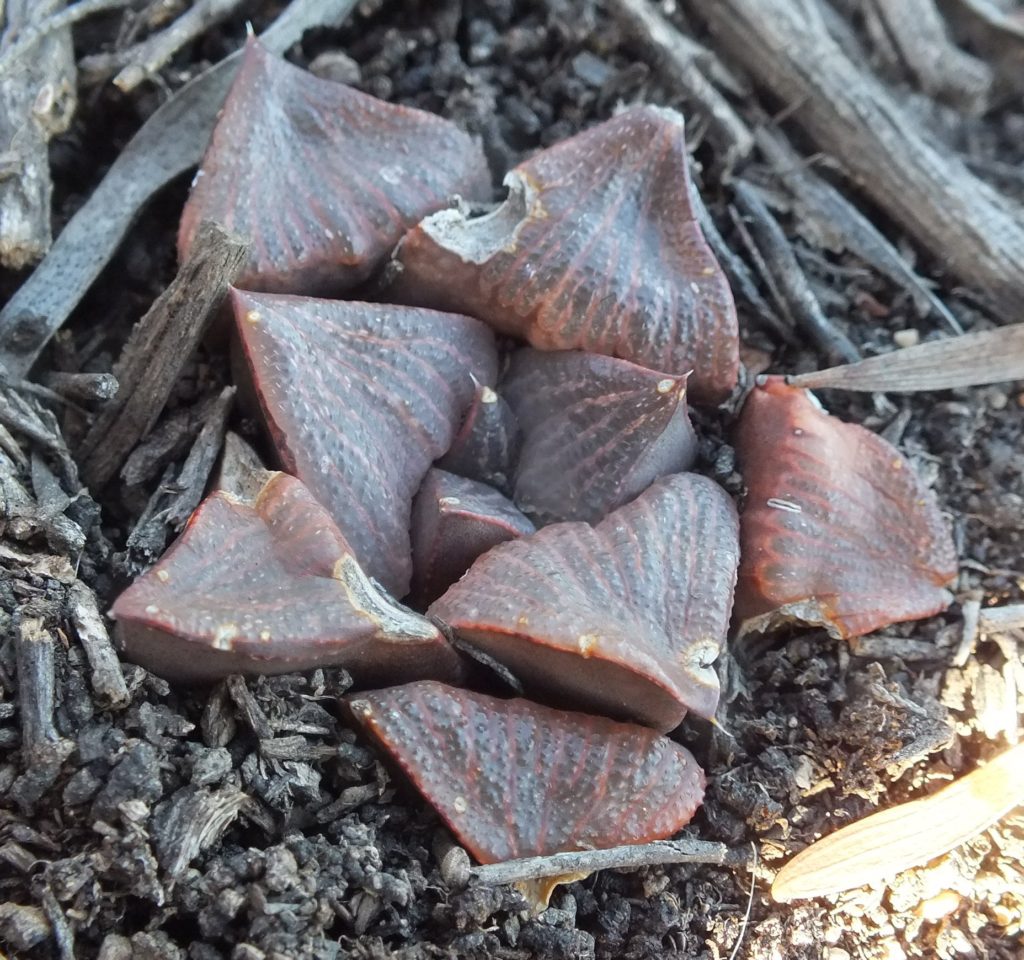
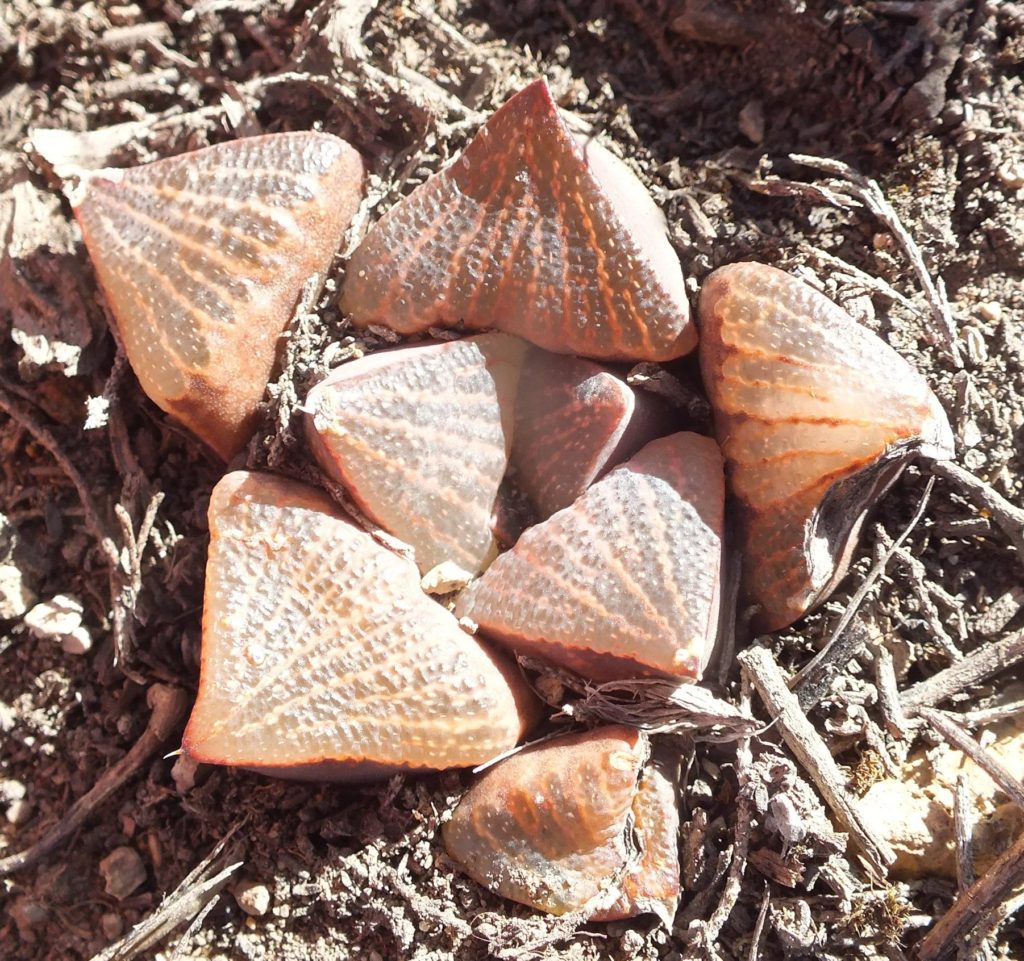

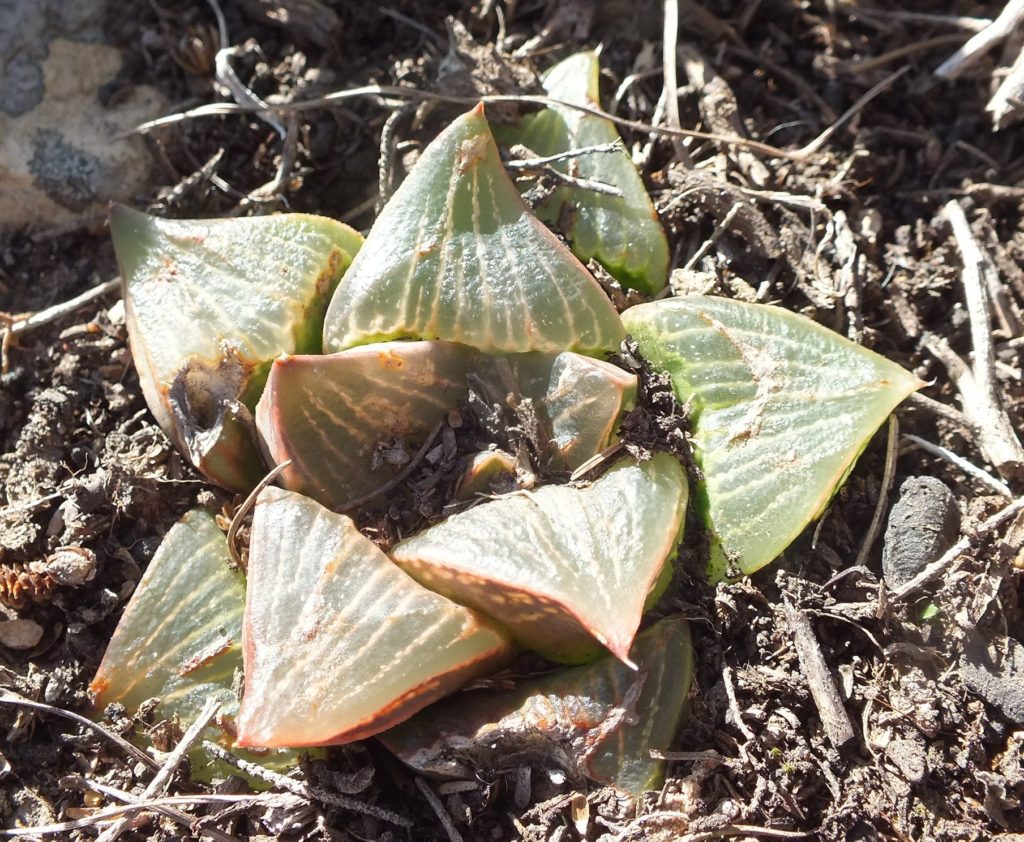

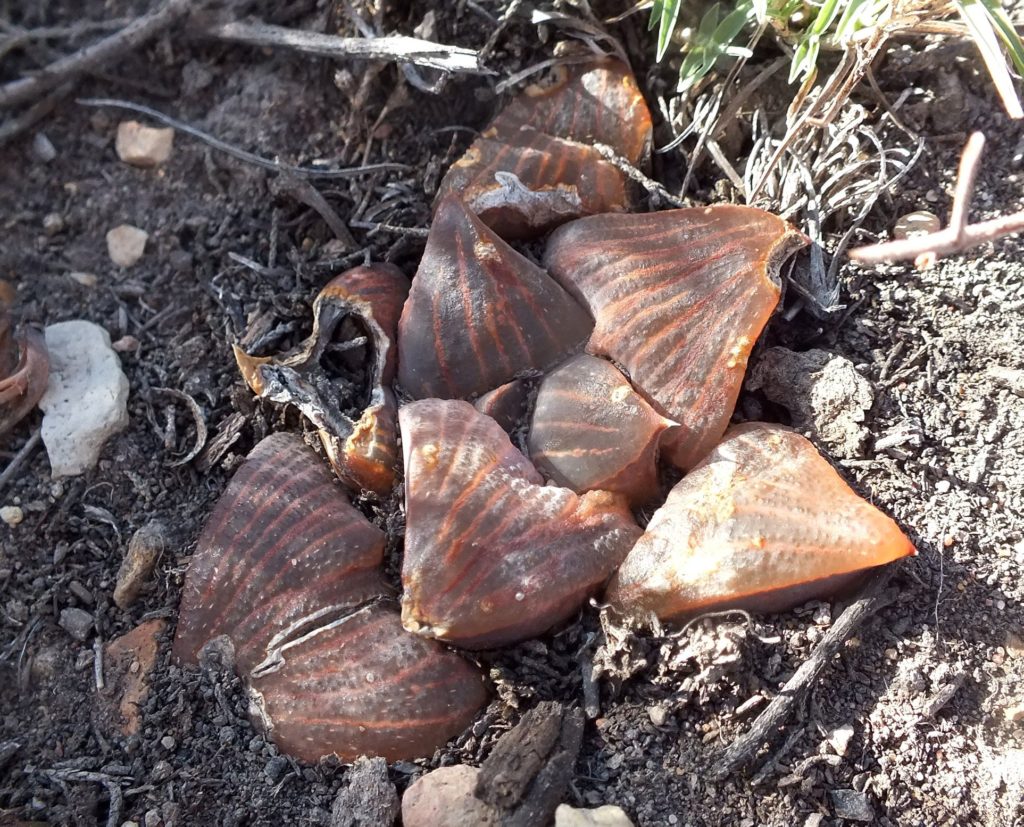

Essie Esterhuizen wrote – Populations in that area confuse me. I am not sure whether I deal with the western end of Haworthia pygmaea or eastern end of Haworthia retusa.
Bruce Bayer replied – I am so glad Essie has commented because I have just felt so in need of expressing my present feelings about the aloids generally. There was a congress on Aloe classification about 10 years ago that was hailed as a breakthrough for the subject. I saw it as a total farce because the essential nature of species was ignored. My experience and slight knowledge of the DNA methodology applied in the latest solution for the genera (and species), is that it is supremely cringeworthy. All it gets right is the three Haworthioid genera where sequencing was not needed to reach that conclusion. Part of my fears for the worst are based on the fact that two of the major sequencing studies were initiated to explore the phylogeny of just Haworthia species. That the results were written up to totally avoid discussion of the initial hypothesis will never cease to confound me. My confidence in aloid classification is at zeropoint.

“H. fusca” Albertinia and Essie’s comment…”Populations in that area confuse me. I am not sure whether I deal with the western end of Haworthia pygmaea or eastern end of Haworthia retusa.” Why I so welcome this comment is because it is the first I have seen in 40 years from someone who knows the field, that makes an honest and truthful statement about Haworthia. I recall Essie did say something similar about the variation in Haworthia turgida, to dismiss this mad fragmentation even into varieties.
